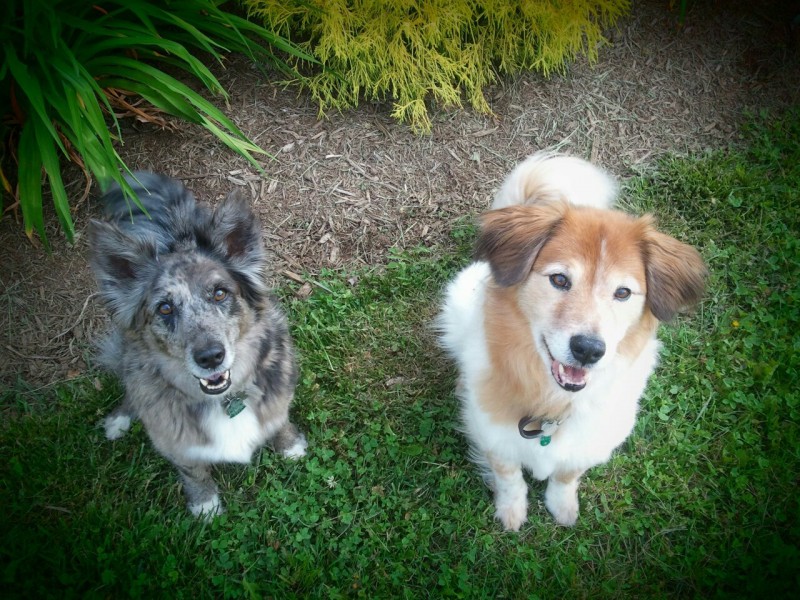Dog Park Etiquette
Posted by Jenn on 09/15/2015
A dog park can be a little patch of paradise for both you and your dog, especially if you don’t have a fenced yard or canine playmates at home. After all, a tired dog is a good dog! But as with everything else in life, a few bad apples can spoil things for everyone else. Out-of-control dogs and their oblivious owners can make a dog park no fun at all, and maybe even dangerous. Here are some tips to make sure your experience at the dog park is positive for everyone involved.
Make sure your dog is ready for the dog park.
Don’t bring your dog to the dog park until he’s at least 4 months old and up to date on vaccinations. Otherwise, your dog could pick up a serious disease. Make sure the dog park isn’t the very first place your dog will meet other dogs, since you have no idea how he will react. First, introduce him to a few well-behaved dogs you already know, and carefully observe his reaction. You should avoid the dog park in general if you know your dog is aggressive or very skittish, since those behaviors can get worse in a high-stimulation environment. You may want to work with a trainer first so your dog can practice meeting other dogs in a calmer, more controlled setting. Your dog should also have key commands like “Come” and “Drop It” down cold before you visit any off-leash park.
Come prepared.
The dog park is not an immaculate place. Slobber and dirt are part of the deal, so you’ll likely want to change out of your work clothes before heading to the dog park. Leave anything fragile or valuable at home, including your dog’s favorite toy, since it could get lost or ruined. If your dog park has a pool— or a bucket of water that your dog is likely to tip over—bring towels. It’s also a good idea to bring your own waste bags and water, even if they are generally available at your dog park.
Obey the posted rules.
The dog park will usually have clear, common-sense rules to ensure everyone’s safety. For example, sick or unvaccinated dogs and female dogs in heat are generally not allowed in dog parks. Often, human food and alcoholic beverages are also specifically banned. Your dog park may set minimum ages for dogs and people, and may require smaller dogs to be in a separate area from the larger dogs.
Make sure your dog knows how to greet other dogs politely.
Dogs are not born knowing how to greet other dogs, but they can learn through proper socialization and encouragement. Puppies in particular can be overly exuberant, and older dogs may need to show them how it’s done. Polite dogs approach each other slowly, without looking each other in the eye, and sniff each other’s hindquarters. Charging, lunging, and mounting are all considered pushy in dog language, and rudeness can provoke fighting. That’s perfectly reasonable when you think about it—you wouldn’t want a strange person doing that to you, either! Along these lines, you should make sure that your dog doesn’t rush to the gate when dogs come and go. It’s not only rude, but it’s an easy way for your dog to slip through the gate and get loose.
5. Remember that dogs enjoy the dog park and the company of other dogs in different ways. Pay attention to how your dog is reacting, and be prepared to leave if necessary.
Rather than chase other dogs around the park, your dog might prefer to roam around sniffing the bushes, or might ignore other dogs completely in favor of extended games of fetch. That’s perfectly OK. It’s also possible that your dog isn’t feeling the dog park today. Don’t make her play with other dogs (especially rude ones), or make her stay at all if she’s not having fun. Forcing her to participate won’t toughen her up — it will just make her dread future trips to the park. If you do leave with a smaller dog, it is better to lead your dog out of the park on a leash rather than in your arms. A small dog being carried is like prey in a tree, and large excitable dogs may be tempted to jump on you.
6. Be friendly to the other people and their dogs, but don’t be nosy or oblivious.
Don’t get so caught up in conversation — or your phone! — that you’re not paying attention to what your dog is doing. This is probably the most important tip of all. You’re responsible for making sure your dog is safe and not being obnoxious to other dogs and people. Playful canine roughhousing is one thing, but you need to intervene immediately if your dog is being bullied or being a bully. You also need to notice that your dog is using the bathroom so that you can clean up after him. Leaving dog feces on the ground is not just inconsiderate—it can also spread disease. Lastly, please don’t give treats to other people’s dogs, discipline other people’s dogs, or give unwelcome dog training advice. You don’t know the other dog’s history, including potential allergies, and what worked beautifully for your dog may be disastrous for another.
Are you a regular at your local dog park, or just a newbie? We can’t wait to hear about your experiences. What do you think makes a great dog park? Want to give a shout-out to your awesome dog-park community, or share a pet peeve? Let us know in the comments!

